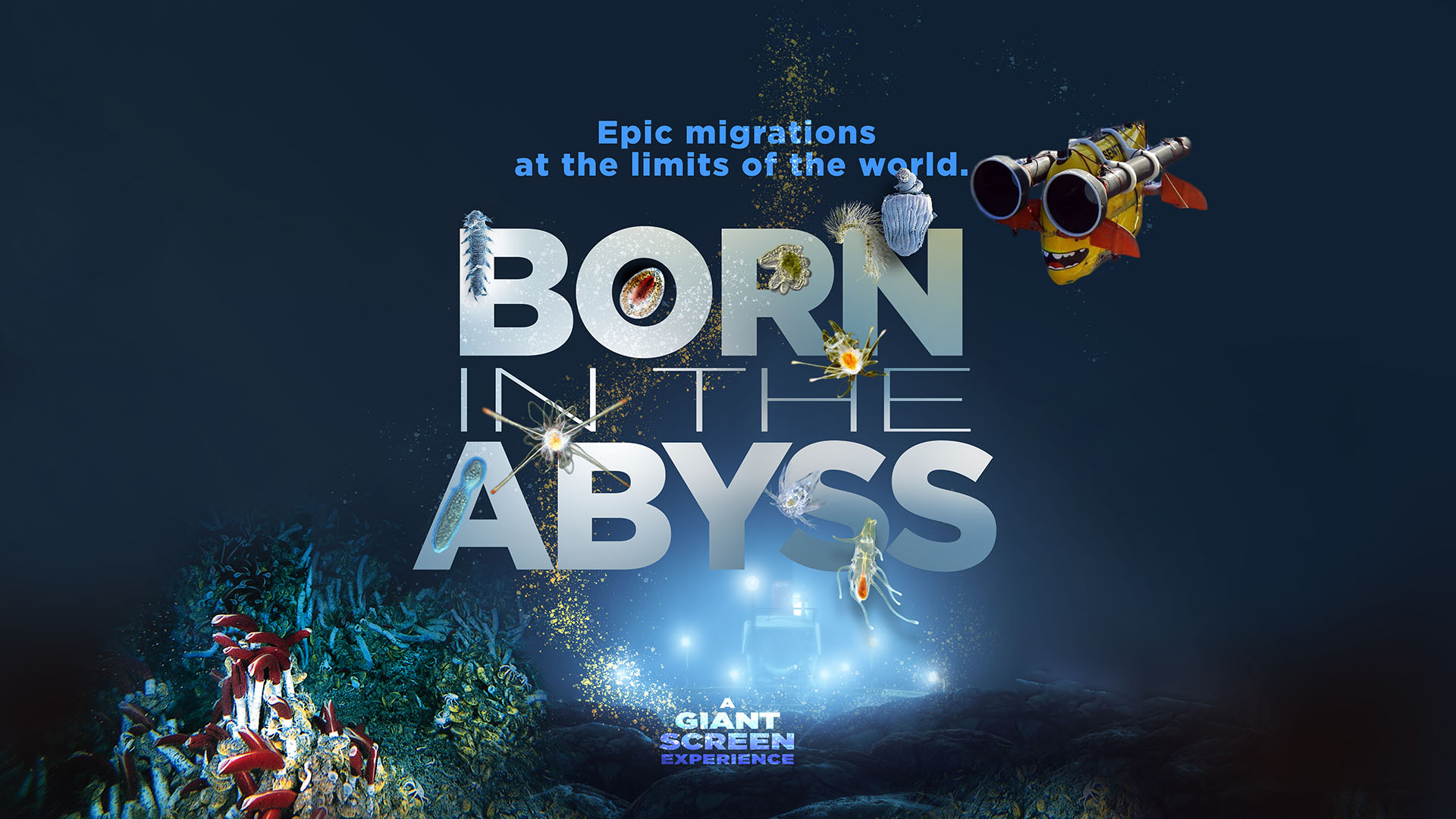
Born in the Abyss - Coming Soon!
About the Film
Born in the Abyss is a giant screen film in production in collaboration with the Oregon Institute of Marine Biology at the University of Oregon, with funding from the National Science Foundation. The film propels audiences on a submarine adventure to take a unique and immersive look at leading-edge marine biology research focused on larval forms (the microscopic babies) of animals in the deep ocean. Using the famous Alvin submersible, teams of college students visited the deep ocean in the Atlantic, the Tropical Pacific, and the Gulf of Mexico to investigate how virtually invisible larvae renew and sustain life in some of the most extreme conditions on the planet. The film highlights an adventure that few young people experience, but sends the message that high-tech science is within the reach of dedicated students.
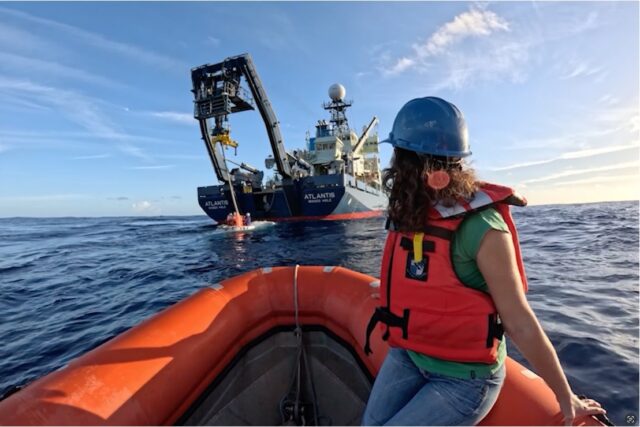
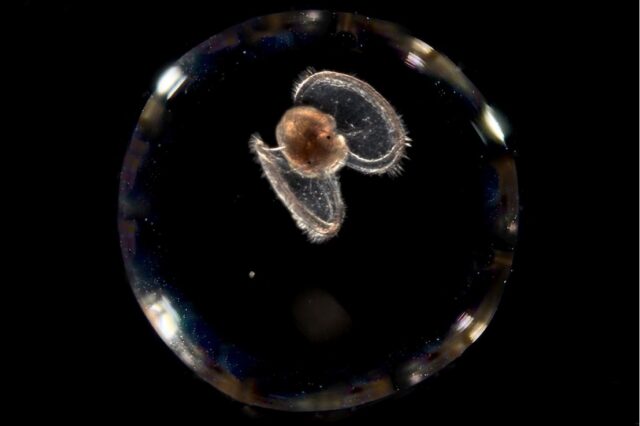
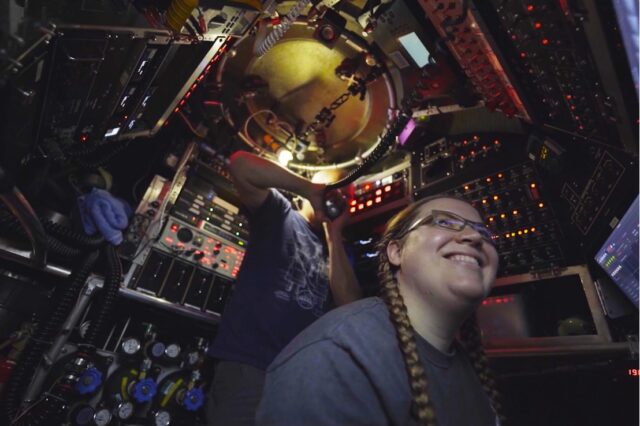
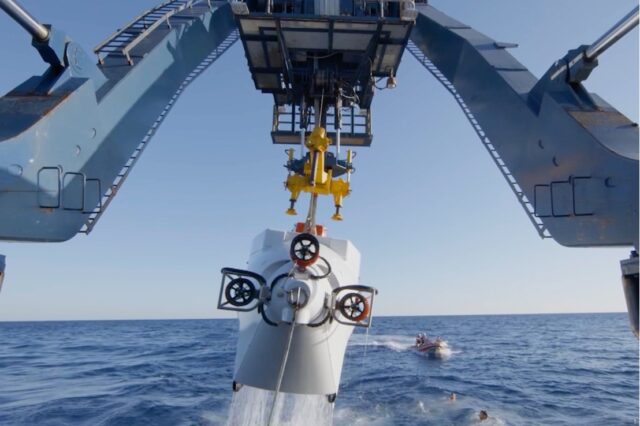
NSF STEM Day
May 10, 2025
Production of Born in the Abyss is not yet complete, but a teaser reel and other outreach materials will be available on May 10th at select locations as part of the National Science Foundation’s 75th Anniversary Celebration.
Students featured in the film (as well as senior scientists) will be present to talk about their research experiences and to answer questions from the audience. Hands-on activities designed specifically for this special day will be available to visitors at the various venues. These will include QR-based museum-wide activities about larval forms, and live demonstrations of larval form and behavior presented on large video screens attached to high-quality and video-enabled microscopes.
Select theaters will also be showing Volcanoes of the Deep Sea, a previous NSF-funded IMAX movie produced by The Stephen Low Company in collaboration with Rutgers University.
Seattle, Washington
- Born in the Abyss teaser reel
- Showing Volcanoes of the Deep Sea at 11:00 a.m. and 2:00 p.m.
- Q&A with deep-sea scientists after each showing
- Larval Quest Activity and Live Larval Demo 12:30–5:00 p.m.
Portland, Oregon
- Born in the Abyss teaser reel
- Showing Volcanoes of the Deep Sea at 11:00 a.m. and 2:00 p.m.
- Q&A with deep-sea scientists after each showing
- Larval Quest activity and live larval demo 10:00 a.m. – 5:00 p.m.
Charleton, Oregon
- Born in the Abyss teaser reel
- Larval Quest activity 11:00 a.m. – 5:00 p.m.
- Highlights of NSF-funded research at the Oregon Institute of Marine Biology
- Live larval demo 11:00 a.m. – 3:00 p.m.
Tallahassee, Florida
- Born in the Abyss teaser reel
- Showing Volcanoes of the Deep Sea at 1:00 and 5:00 p.m.
- Q&A with deep-sea scientists after each showing
- Larval Quest activity

Larval Biology Basics
What is a larva?
The beginning stage, or baby, of many animals that does not look like the adult
Human babies have the same basic features as adults (such as fingers, toes, nose, eyes), but butterflies do not look much like their caterpillar babies. Neither do frogs look much like tadpoles. These animals have indirect development, in which a larval form (baby) undergoes a dramatic change called metamorphosis to take on the adult form. Metamorphosis is Greek for “transformation” and often involves a change in both behavior and anatomy.

Marine larvae are tiny and diverse
Like butterflies and other insects, many marine animals lack backbones and are called invertebrates. The larvae (plural of larva) of marine invertebrates are microscopic, and many are smaller than the period at the end of this sentence.
Larvae are considered plankton which includes any organism not strong enough to swim against the current. For larvae, their size means they are planktonic, living at the whim of the waves. Pictured here are a selection of diverse larvae. Their unique structures and traits allow marine biologists to determine which larval form will metamorphose into which adult.
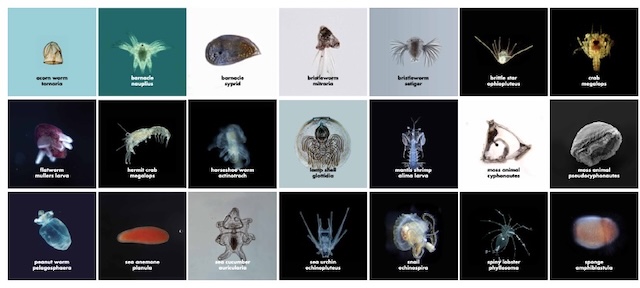
How do larvae live?
Larvae use hair-like cilia to move water around them
At their small size, moving through the ocean for a larva is like swimming through honey for a human. To move and feed in this environment, they typically have dense cilia, hair-like projections that beat to create small currents around the larva’s body. The image blow shows a pluteus larva of an ophiuroid and the currents formed around its body by the movement of its cilia.
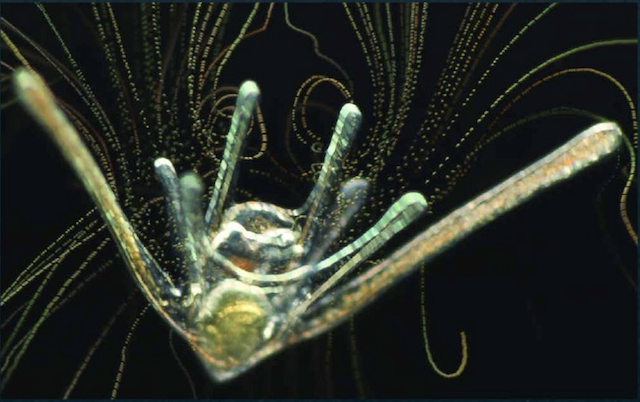
Many, but not all, larvae feed
Larvae that need to feed to reach metamorphosis are called planktotrophic. Typically, planktotrophic larvae eat microscopic algae called phytoplankton. Some also eat other microscopic animals known as zooplankton. Some larvae do not feed and instead grow from the nutrients in the yolk of their egg. Non-feeding larvae are called lecithotrophic. Planktotrophic spend more time in the plankton causing them to disperse further away from their parents than lecithotrophic larvae. Planktotrophic larvae are more common as you can see in the color-coded image below.
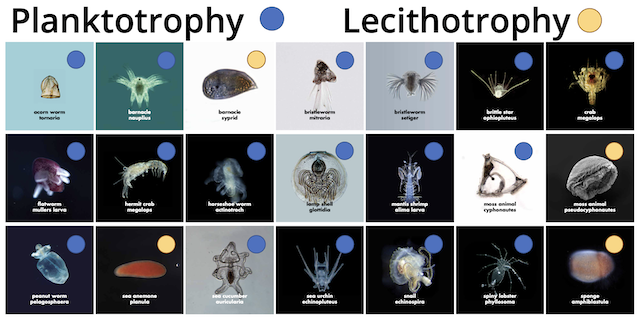
How many larvae are there?
The number of babies decreases as the mom's effort increases
In species with planktotrophic larvae, eggs are small as they only contain enough energy to develop a feeding larva. A single mom could produce hundreds of thousands to millions of these small eggs.
In lecithotrophic species, eggs are larger and contain enough energy for the larva to reach metamorphosis. Moms of these species only make hundreds to tens of thousands eggs.
Parents of some species invest even more energy by brooding, or protecting their developing babies. These species produce the fewest (tens to hundreds) and largest eggs of the three groups discussed.

Most marine larvae are in surface waters
Approximately 170,000 marine species worldwide possess a larval stage. A single drop of surface ocean water may contain the larvae of several marine invertebrates.
However, the number of larvae decreases with increased ocean depth. Larvae are mostly found in the sunlit suface waters where their phytoplankton food is found. When searching for the larvae of deep-sea animals, scientists can filter thousands of liters of water to find only a few larvae.
The image below shows a plankton sample from surface waters viewed under a microscope. There is a lot of phytoplankton which create the green and yellow colors and are often seen as small lines. Most of the image would be clear if it were of a deep water sample.
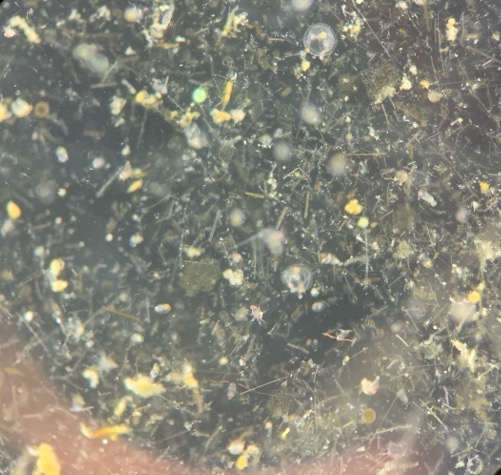
Larval Quest Activity
How to Play
Today, you are a marine biologist exploring the ocean to find larvae! During your larval quest, you will encounter the unique body forms of the larvae and learn about their life before they appear as the animals you may know and love.
At an event location:
-
- Hunt for 12 wall tiles of larvae that are hidden throughout the center.
- Follow the QR code on each wall tile to a webpage to learn more about that larva.
- Fill out your collection log with the name of the larva, the adult it becomes, and if you can, a fun fact from the website.
Online only:
-
- Read through the above Larval Biology Basics.
- Use the list below to browse through the 12 larval forms.
Larvae to find:
Project Team
The Stephen Low Company
Oregon Institute of Marine Biology, University of Oregon
National Science Foundation
